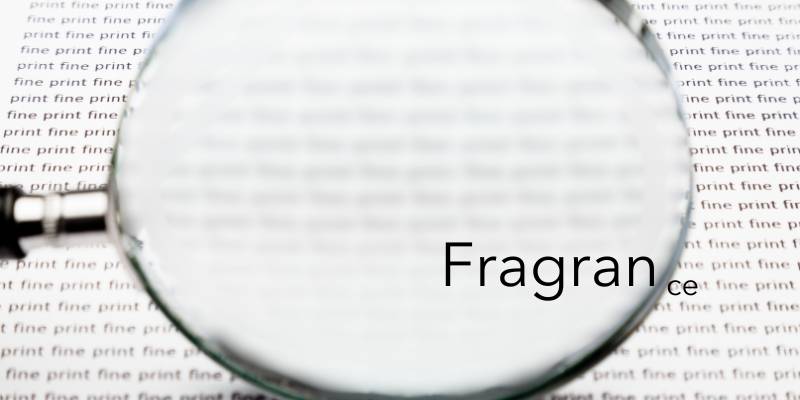What Are MoCRA Regulations and Why They Matter
The Modernization of Cosmetics Regulation Act of 2022 (MoCRA) represents a significant overhaul in how cosmetic products are regulated in the United States. This landmark legislation aims to enhance consumer safety and ensure that cosmetics manufacturers adhere to stringent standards.
What is MoCRA?
MoCRA regulations mark the most substantial expansion of the FDA’s authority over cosmetic products since the Federal Food, Drug, and Cosmetic (FD&C) Act of 1938. The new regulations introduce comprehensive requirements for adverse event reporting, facility registration, product listing, and safety substantiation.
Why Did MoCRA Come About?
The need for MoCRA arose from the rapid globalization of the cosmetics industry, which has seen the introduction of new technologies and ingredients, such as nanotechnology and botanicals. Prior to MoCRA, the FDA’s regulatory framework for cosmetics was outdated, lacking mandatory requirements for good manufacturing practices (GMP), product recalls, and adverse event reporting. The fragmented legal landscape across different states further complicated compliance for manufacturers.
What Type of Products Does It Affect?
MoCRA regulations apply to a wide range of cosmetic products such as:
- Makeup products (e.g., foundation, blush, eyeshadow, mascara, lipstick)
- Skincare items (e.g., moisturizers, cleansers, toners, serums)
- Hair care products (e.g., shampoos, conditioners, hair treatments)
- Perfumes and fragrances
- Nail polishes and nail care products
- Shaving creams and other grooming products
- Body lotions and creams
- Sunscreens and tanning products
- Deodorants and antiperspirants
- Toothpaste and oral care products intended for cosmetic use
- Products with new technologies like nanotechnology-based items
- Botanical and natural ingredient-based cosmetics
- Products containing CBD or other emerging ingredients
Any product intended for cosmetic use, whether manufactured domestically or imported, falls under the purview of these new regulations (FDA)(cosmeticsdesign.com).
Who is Responsible for Complying?
The responsibility for compliance with MoCRA regulations lies primarily with the “responsible person,” defined as the manufacturer, packer, or distributor whose name appears on the product label. This includes both domestic and international entities involved in the production and distribution of cosmetic products within the United States.
What Are the Responsibilities That Come With This?
The responsibilities under MoCRA are extensive and include the following:
- Adverse Event Reporting: Reporting serious adverse events associated with cosmetic products to the FDA within 15 business days. This includes any subsequent material medical information received within a year of the initial report.
- Facility Registration: Registering manufacturing and processing facilities with the FDA and renewing this registration every two years.
- Product Listing: Listing each marketed cosmetic product with the FDA, including its ingredients, and updating this information annually.
- Safety Substantiation: Ensuring and maintaining records that substantiate the safety of cosmetic products through scientifically robust methods.
- Mandatory Recall Authority: Complying with FDA orders for mandatory recalls if a product is found to be adulterated or misbranded.
What’s Changing with MoCRA in 2024
As the Modernization of Cosmetics Regulation Act (MoCRA) continues to be implemented, several key changes are scheduled to take effect in 2024. These changes aim to further enhance the safety and regulation of cosmetic products in the United States.
Good Manufacturing Practices (GMP) Requirements
One of the significant changes in 2024 is the introduction of mandatory Good Manufacturing Practices (GMP) for cosmetic products. Previously voluntary, these practices will now be required to ensure that cosmetic products are manufactured in a way that meets consistent quality standards and reduces risks of contamination and errors. The FDA is expected to publish a proposed rule for GMP requirements by December 29, 2024
Fragrance Allergen Labeling
By June 29, 2024, the FDA is required to issue a proposed rulemaking for fragrance allergen labeling. This rule will mandate that certain fragrance allergens must be disclosed on the labels of cosmetic products. The final rulemaking must be issued 180 days after the close of the public comment period for the proposed rule.
Electronic Submission of Serious Adverse Event Reports
Starting in 2024, the FDA will implement a system for the electronic submission of serious adverse event reports related to cosmetic products. This new system is designed to streamline the reporting process and ensure timely and efficient communication between cosmetic manufacturers and the FDA.
Research and Regulation of PFAS in Cosmetics
By December 2025, the FDA is required to issue a report assessing the safety of per- and polyfluoroalkyl substances (PFAS) in cosmetic products. This assessment will include a summary of the scientific evidence regarding the safety and risks associated with PFAS use in cosmetics. The FDA has already started its research to fill existing scientific gaps in preparation for this report.
Testing Methods for Talc in Cosmetics
The FDA is mandated to issue a proposed rule on standardized testing methods for detecting and identifying asbestos in talc-containing cosmetic products by December 29, 2023. This rule aims to ensure that talc-containing cosmetics are free from harmful contaminants and safe for consumer use. The final rule is expected to be issued after the public comment period closes in 2024.
Why These Changes Matter
These upcoming changes under MoCRA are critical for enhancing consumer safety and ensuring that cosmetic products sold in the U.S. meet rigorous safety standards. By implementing mandatory GMP, improving transparency with allergen labeling, and enhancing reporting and testing procedures, MoCRA aims to protect consumers from potential health risks associated with cosmetic products.
How and Why You Might Need to Partner with Your Third Party Fulfillment (3PL) Company
Compliance with MoCRA regulations can be complex and resource-intensive, making it essential for many businesses to partner with a third-party fulfillment (3PL) company. Here’s why:
- Expertise and Resources: 3PL companies often have the expertise and resources to navigate regulatory requirements efficiently. They can assist with record-keeping, reporting, and ensuring compliance with FDA mandates.
- Operational Efficiency: Partnering with a 3PL can streamline operations, allowing cosmetic companies to focus on product development and marketing while the 3PL handles logistics and regulatory compliance.
- Risk Mitigation: By leveraging the capabilities of a 3PL, companies can reduce the risk of non-compliance, which can lead to costly recalls and legal consequences.
MoCRA regulations have ushered in a new era of safety and accountability for the cosmetics industry. Understanding these regulations and ensuring compliance is crucial for maintaining consumer trust and avoiding legal pitfalls. Partnering with a knowledgeable 3PL can be a strategic move to achieve these goals efficiently.
Additional Resources for Understanding MoCRA Regulations
To help you navigate and comply with MoCRA regulations, here are some valuable resources that provide detailed information and guidance:
- FDA – Modernization of Cosmetics Regulation Act of 2022 (MoCRA): The FDA’s official page offers a comprehensive overview of MoCRA, detailing the new requirements, responsibilities for manufacturers, and the FDA’s expanded authority under the act.
- Foley & Lardner LLP – What You Need to Know About MoCRA: This resource from a prominent law firm explains key provisions of MoCRA, including serious adverse event reporting, safety substantiation, and the responsibilities of cosmetic product manufacturers.
- Nutraceuticals World – Preparing for MoCRA: This article discusses the implications of MoCRA for the cosmetics industry, focusing on new labeling requirements, GMP standards, and safety substantiation.
- Cosmetics Design – MoCRA’s Impact on the Beauty Industry: This analysis highlights the regulatory changes brought by MoCRA and their effects on cosmetics manufacturers, including mandatory recall authority and facility registration.
- Gibson Dunn – Cosmetics Regulation Insights: This resource offers insights into the FDA’s plans for implementing MoCRA, including guidance on records access, mandatory recalls, and safety research.
- Badger Fulfillment Group – Fulfillment Services for Cosmetics: Learn about how partnering with a 3PL like Badger Fulfillment Group can help cosmetic companies.
These resources will provide you with the knowledge and tools needed to effectively navigate the new regulatory landscape introduced by MoCRA, ensuring your cosmetic products meet all necessary safety and compliance standards.





